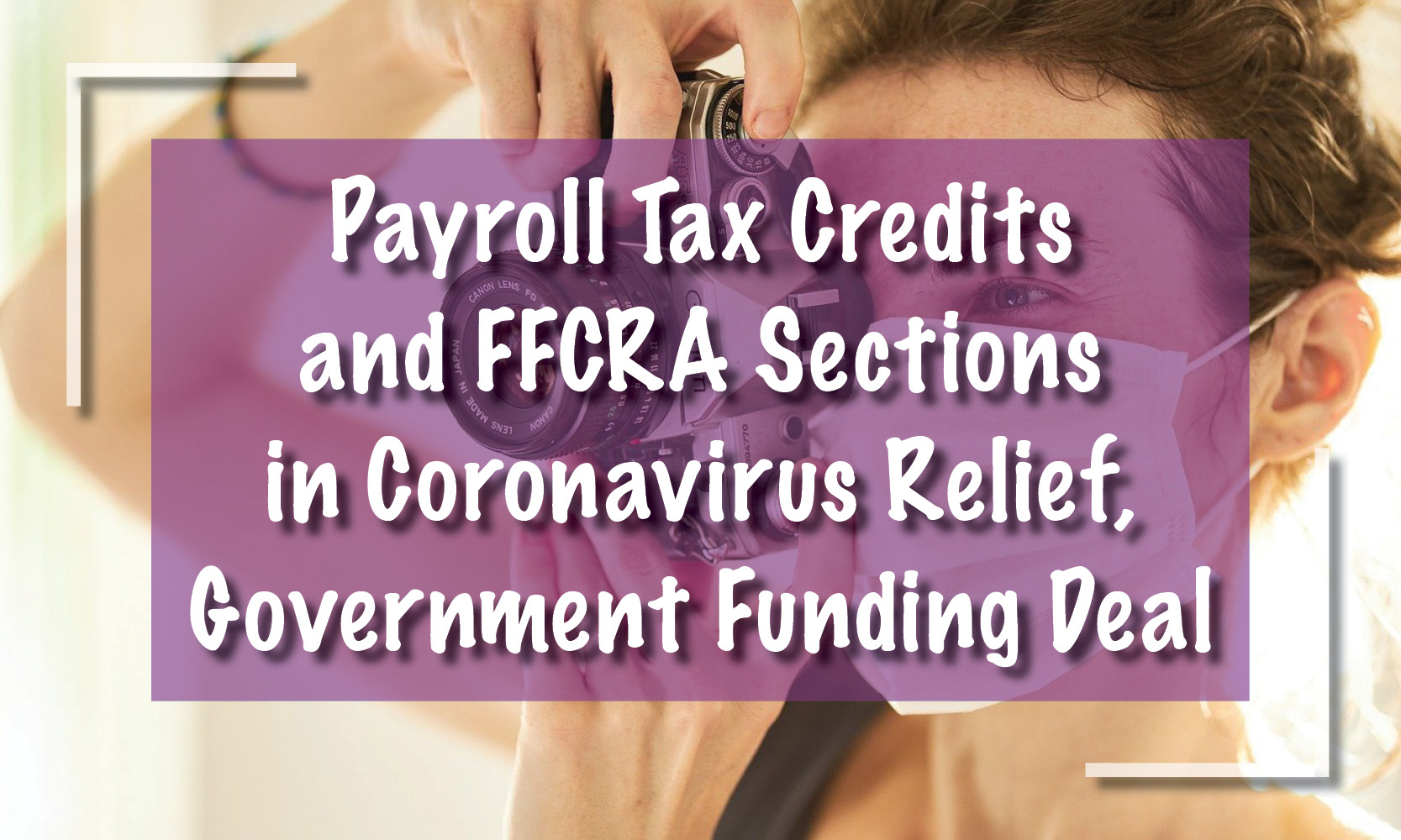Payroll Tax Credits and FFCRA Sections in Coronavirus Relief, Government Funding Deal
On December 21, 2020, Congress passed the Coronavirus Relief Bill. As we wait for the approval of this Bill, MNMW would like to share some of the key points from the Bill Summary of the Relief Provisions:
Section 113. Work Opportunity Tax Credit
The provision extends, through 2025, an elective general business credit to employers hiring individuals who are members of one or more of ten targeted groups under the Work Opportunity Tax Credit program.
Section 119. Employer tax credit for paid family and medical leave
The provision extends, through 2025, the employer credit for paid family and medical leave, which permits eligible employers to claim an elective general business credit based on eligible wages paid to qualifying employees with respect to family and medical leave. The credit is equal to 12.5 percent of eligible wages if the rate of payment is 50 percent of such wages, and is increased by 0.25 percentage points (but not above 25 percent) for each percentage point that the rate of payment exceeds 50 percent. The maximum amount of family and medical leave that may be taken into account with respect to any qualifying employee is 12 weeks per taxable year.
Sections 206 & 207. Employee retention tax credit modifications
The provision extends and expands the CARES Act employee retention tax credit (ERTC). It also contains technical corrections to the CARES Act.
Beginning on January 1, 2021 and through June 30, 2021, the provision:
- Increases the credit rate from 50 percent to 70 percent of qualified wages;
- Expands eligibility for the credit by reducing the required year-over-year gross receipts decline from 50 percent to 20 percent and provides a safe harbor allowing employers to use prior quarter gross receipts to determine eligibility;
- Increases the limit on per-employee creditable wages from $10,000 for the year to $10,000 for each quarter;
- Increases the 100-employee delineation for determining the relevant qualified wage base to employers with 500 or fewer employees;
- Allows certain public instrumentalities to claim the credit;
- Removes the 30-day wage limitation, allowing employers to, for example, claim the credit for bonus pay to essential workers;
- Allows businesses with 500 or fewer employees to advance the credit at any point during the quarter based on wages paid in the same quarter in a previous year;
- Provides rules to allow new employers who were not in existence for all or part of 2019 to be able to claim the credit; and
- Provides for a small business public awareness campaign regarding availability of the credit to be conducted by the Secretary of the Treasury in coordination with the Administrator of the Small Business Administration.
Retroactive to the effective date included in section 2301 of the CARES Act, the provision:
- Clarifies the determination of gross receipts for certain tax exempt organizations;
- Clarifies that group health plan expenses can be considered qualified wages even when no other wages are paid to the employee, consistent with IRS guidance; and
- Provides that employers who receive Paycheck Protection Program (PPP) loans may still qualify for the ERTC with respect to wages that are not paid for with forgiven PPP proceeds.
Section 303. Employee retention credit for employers affected by qualified disasters
The provision provides a tax credit for 40 percent of wages (up to $6,000 per employee) paid by a disaster-affected employer to a qualified employee. The credit applies to wages paid without regard to whether services associated with those wages were performed. Certain tax-exempt entities are provided the option to claim the credit against payroll taxes.
Section 4. Extension of certain deferred payroll taxes
On August 8, 2020, the President of the United States issued a memorandum to allow employers to defer withholding employees’ share of social security taxes or the railroad retirement tax equivalent from September 1, 2020 through December 31, 2020, and required employers to increase withholding and pay the deferred amounts ratably from wages and compensation paid between January 1, 2021 and April 31, 2021. Beginning on May 1, 2021, penalties and interest on deferred unpaid tax liability will begin to accrue.
The provision extends the repayment period through December 31, 2021. Penalties and interest on deferred unpaid tax liability will not begin to accrue until January 1, 2022.
Section 16. Extension of credits for paid sick and family leave
The provision extends the refundable payroll tax credits for paid sick and family leave, enacted in the Families First Coronavirus Response Act, through the end of March 2021. It also modifies the tax credits so that they apply as if the corresponding employer mandates were extended through the end of March 2021. This provision is effective as if included in FFCRA.
Section 17. Election to use prior year net earnings from self-employment in determining average daily and self-employment income for purposes of credits for paid sick and family leave
Allows individuals to elect to use their average daily self-employment income from 2019 rather than 2020 to compute the credit. This provision is effective as if included in FFCRA.
Section 18. Certain technical improvements to credits for paid sick and family leave
Makes technical changes coordinating the definitions of qualified wages within the paid sick leave, paid family and medical leave, and the exclusion of such leave from employer OASDI tax. This provision is effective as if included in FFCRA.
___________________________________________
Our team at MNMW is working constantly to bring you the most recent news and updates related to the COVID-19 crisis that could impact you and your loved ones.
For more information you can visit our MNMW Coronavirus (Covid-19) Resource page with the button below or call in at (239) 433-5554.


